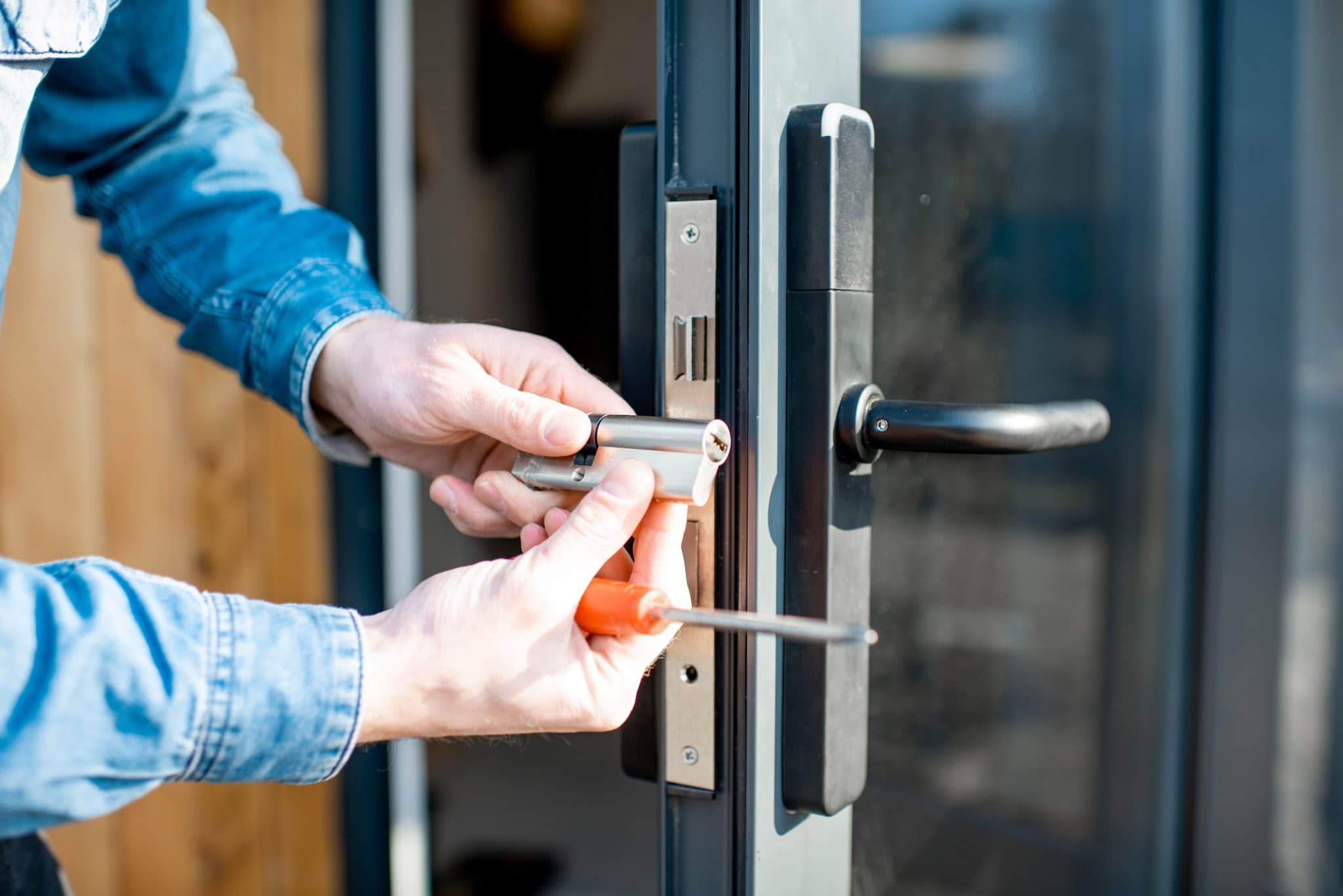Table of Contents
⚡ Welcome back to The Weekly Authority, the Android Authority series that recaps the top Android and tech news from the week.
📸 Tristan Rayner with you for news and views, while Hadlee Simons takes a deeper look at wireless charging. What’s real, what’s not?
Popular news this week
The HTC-made Pixel 2 XL (above) was a big story this week… and here’s everything else that happened.
- Google Fit goes much further: Google launched a new Google Fit heart rate and respiratory rate feature. This uses your smartphone to examine both your ticker and your lungs. You prop your phone up so your camera can record you breathing comfortably for about 30 seconds. Using that footage of your chest movements, the new Google Fit will tell you how many breaths you’re taking. It’s a Pixel exclusive to start, mind you.
- Apple VR headset: Fresh reporting about Apple’s VR headset told us what’s happening in Cupertino. But is the $3,000 price tag Apple is considering for a dual 8K headset at all feasible?
- Xiaomi concept: Xiaomi’s new concept phone was shown off. It’s portless and has a waterfall display on all four edges. Just a concept, but is this just showing technical expertise, or the future?
- Huawei: Looks like Huawei’s US ban isn’t going away under the Biden administration. The President’s pick for Commerce Secretary stated this is “no reason” why the firm shouldn’t remain on the US Entity List. Also, Ars Technica’s deep dive into Huawei’s Harmony OS revealed it to be as close to an Android 10 copy as could possibly exist. There’s plenty of reason to think Huawei is hurting itself with this copy-cat approach that rubs people the wrong way.
- OnePlus: The next affordable OnePlus smartphone now has a name: Nord N1 5G, replacing the Nord N10 it seems.
- Find X3 Pro: Big Oppo Find X3 Pro leaks, including a novel-looking rear camera module. Oddly, well-placed leaks suggest no prism zoom camera for those 5x optical zoom-and-beyond shots.
- Stadia: Google killed its Stadia gaming studios with a bizarre sort of announcement to say making games is expensive. Also, Alphabet made $57B in the last three months, and more than $15B profit. So, obviously, it just isn’t going that well? Google is looking to partner with other gaming companies to make bank on its underlying cloud gaming tech, but Stadia itself is sticking around… for now.
- Pixel 2 XL prototype: Here’s the first-ever look at the HTC-made Pixel 2 XL that thankfully never was, with a truly bad design on offer. Google (rightfully) chose LG, and later bought out HTC R&D engineers.
- SpaceX: The latest SpaceX Starship test flight went up very well! The trip back down wasn’t quite as good.
- Ford Mach-E first looks: Deep dive (drive?) with the new electric Ford Mustang Mach-E: super interesting look at Ford’s coming EV (The Verge). And here’s another too: Ford Mustang Mach-E review: the people’s pony goes electric, but this early non-GT version isn’t super exciting to drive (Ars Technica).
- Chipageddon: How will “the chipageddon” affect you? (BBC). Supplies are limited, TSMC and Samsung are at fab capacity, and even Ford has had to stop making F-150 trucks, General Motors has slowed Chevy production… in short, everyone but Apple and Samsung is struggling for a wide variety of chips, and the shortage is continuing.
Reviews/Features
Two reviews and two features!
Instant Authority: True wireless charging — finally here or vaporware?
(Written by Hadlee Simons)

We’ve recently seen both Motorola and Xiaomi demonstrate true wireless charging, allowing you to charge a phone over the air instead of plonking it down on a wireless charging pad.
Motorola technically posted a video a short while before Xiaomi detailed their tech. But this video seemed more like a rushed response to Xiaomi’s comparatively polished announcement, which was teased beforehand.
Nevertheless, the cynic in me can’t shake the feeling that we should be a little cautious about this tech seeing the light of day. After all, Xiaomi and Motorola aren’t the first companies to demonstrate true wireless charging.
- Energous and Ossia are two of the earliest players in the space, and they’ve been a fixture at trade shows for what feels like years now. In fact, I distinctly remember sitting in on an Ossia demo back at MWC 2019.
- Energous touts its so-called Watt Up technology. The firm’s solution offers traditional, contact-based wireless charging and true wireless charging at distances of up to 15 feet (4.5 meters).
- Meanwhile, Ossia has its “Cota” true wireless charging tech for over-the-air topups. The company says its charging solution is able to bounce charging beams off walls and around people and pets.
- Energous and Ossia haven’t brought this tech to the commercial wearable or smartphone space just yet.
- The closest we may have gotten to a smartphone with true wireless charging was Ossia announcing a partnership with accessory maker Spigen back in 2019. This resulted in the reveal of the Forever Sleeve case for iPhones.
- The duo initially said that they planned to ship and produce these cases by 2020. Of course, it’s 2021 now.
- I asked Ossia and Spigen about the fate of the case, but with no response forthcoming. That’s not an encouraging sign.
- For what it’s worth, both Ossia and Energous have announced partnerships with other companies for this tech. Ossia, for example, announced a pilot program with Walmart to deliver electronic store labels that charge wirelessly. Walmart and T-Mobile were also using its so-called Forever Tracker device that charges over the air for asset-tracking.
In any case, it’s clear that we haven’t seen a commercial smartphone or wearable with true over-the-air wireless charging just yet.
There are points in Motorola and particularly Xiaomi’s favor though.
- For one, Ossia and Energous are startups that don’t have nearly the same level of resources. Meanwhile, Xiaomi and Motorola parent Lenovo are massive companies.
- Size doesn’t guarantee success and breakthroughs, but Xiaomi also generally has a decent track record of demonstrating charging tech and then bringing it to market.
- For example, it showed off 100W charging in March 2019 and then debuted a commercial phone with 120W charging in 2020.
- It also showed off 40W wireless charging in March 2020, and later released the Mi 10 Ultra with 50W wireless charging.
In other words, a breakthrough here could happen.
- But even Xiaomi is saying you shouldn’t hold your breath:
- “We won’t be launching any commercial products with Mi Air Charge Technology this year,” a company representative told us shortly after the tech’s reveal.
There are plenty of concerns regarding true wireless charging tech too. While some are shouting scam, it’s more nuanced than that.
- Efficiency seems like a major concern here. Just how much energy will be wasted on the charging-over-the-air process? And what happens when the charging station doesn’t need to be used? Presumably, it just goes to sleep after a given period of time. But these are still questions yet to be answered.
- Another potential issue is that your phone battery might age a little faster if it’s constantly charging over the air. Hopefully, something like Mi Air Charge gives you more granular control in this regard.
- Will this simply be too finicky for some? Xiaomi promises that its solution can work through obstacles, while Ossia touted its solution as being able to bounce beams off walls. Nevertheless, the last thing anyone wants is to have to hold the phone in a specific way/direction to initiate charging. This is an especially pertinent question for Xiaomi’s mmWave-based solution.
- What about the size of the charging receiver in supported phones? Will it require manufacturers to implement a smaller battery or forego a hardware feature or two to fit?
- 5W over-the-air charging as promised by Xiaomi is also pretty slow, especially with today’s phones offering 20W, 40W, 65W and even 120W charging.
- What about regulatory approval? The likes of Ossia have indeed received the desired FCC certification, but this is another hurdle for any company to overcome in the nascent space.
For what it’s worth, some of these concerns were also relevant for Qi-based wireless charging when it first gained popularity in the late 2000s and early 2010s. Prominent concerns included slow charging speeds, poor efficiency, the potential for excess heat, the need to have charging coils in the phone, and having to line up the device properly to get charging.
Either way, it looks like we’ll need to wait until 2022 to find out if over-the-air charging is the real deal or just the latest in a string of unfulfilled promises.
Tech tweet of the week
- February 8: Xiaomi Mi 11 and MIUI 12.5 global launch date.
- February 22: Huawei’s next foldable phone is officially coming.
- Expected in February: Android 12 developer preview
Tech Tweet of the Week
Sandstorm is a masterpiece
— Elon Musk (@elonmusk) February 4, 2021
After 46 hours off Twitter, Elon Musk returned to say good things about …the 2000’s classic, Sandstorm by Darude. For some reason.
That’s it, folks! We’ll have more top Android stories for you next week. Thanks for reading, and catch you in the next…
Tristan Rayner, Senior Editor.






More Stories
What are the roles of civil engineers in construction projects?
A Developer’s Dream: Achieving Full Stack Mastery with Logicmojo
Top 5 Benefits of Working with a Professional Locksmith